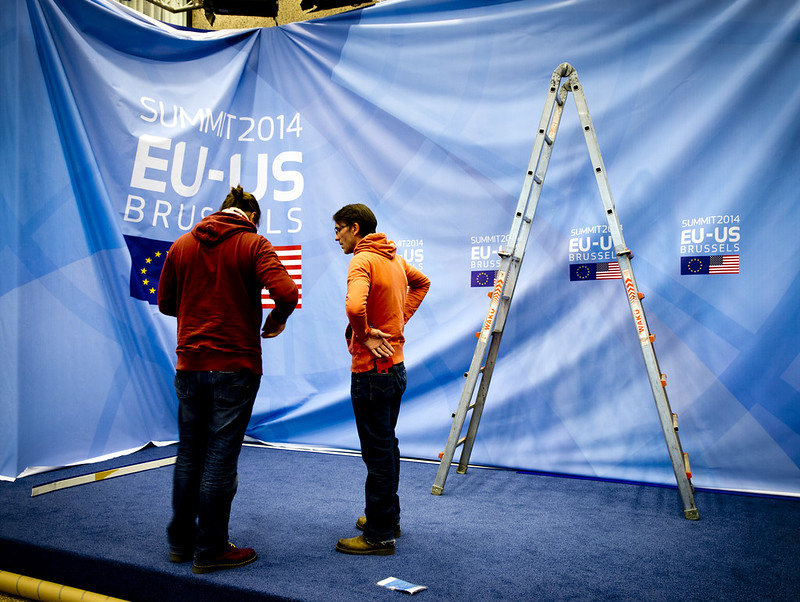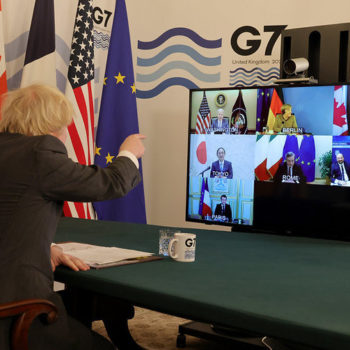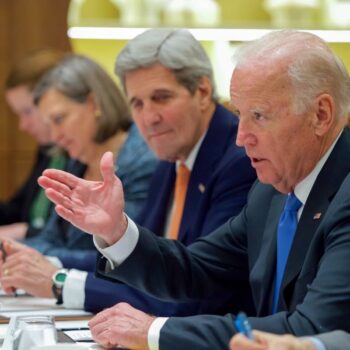On June 15th, President Biden will meet with European Commission President Von der Leyen and European Council President Michel for the first EU-US summit since the US returned to the climate-progressives team. Coming right after the G7 leaders meeting, the EU-US summit is a critical opportunity to agree concrete cooperation to meet the demands of an accelerating climate crisis by:
- Stepping up as champions of multilateralism and delivering on any of the three tests to smooth the road to COP26. These are – equitable vaccine access, global green recovery and finance for climate action – which the G7 may fail to deliver.
- Clearly signalling to domestic industries and international partners (including China and Russia) that the transatlantic allies are putting full geopolitical and economic influence behind accelerating the transition to net-zero.
EU-US summit: making multilateralism work in a climate-changed world?
The EU-US summit is part of a rapid succession of leaders’ level events before the summer break. The G7 in Cornwall (11-13 June) to the NATO summit in Brussels (14 June), and the US-Russia summit in Geneva (16 June) all occur in a matter of days. While this brings short attention spans and preparation time, it also makes the EU-US summit the perfect place for a second attempt at anything the G7 should have but failed to deliver.
Both the EU and the US are acutely aware of the closing window for effectively keeping global temperature increase below 1.5 degrees Celsius. The UN climate conference (COP26) in Glasgow in November presents a key fork in the road. One path shores up confidence that the EU and US will build coalitions to bridge the immense solidarity gaps – on vaccines, green recovery, climate adaptation and loss and damage. The second leads to a decade dealing with the consequences of lost development, catastrophic climate impacts and skyrocketing costs of climate change.
EU-US summit as an opportunity to launch a transatlantic motor for keeping 1.5 in reach.
Both the EU and the US see the future of jobs, growth and prosperity in their transition to a climate-neutral economy. Over the next decade, this means that both will move from setting climate targets to investing in a whole-of-economy transition – with all the social equity and regulatory challenges this entails.
However, this is not yet reflected in the architecture of the transatlantic dialogue. Creating a space to align their whole-of-economy transitions will make domestic and international stakeholders take notice. A high-level dialogue on climate alone can’t cut it, a multi-thematic whole-of-economy dialogue can. This space would align international approaches, while sharing best practices and managing divergences in approaches (i.e. around gas or carbon pricing) early on.
Revamping the current Transatlantic Economic Council into a Transatlantic Green Economy Council answers this need, providing a cross-cutting platform bringing together high-level EU and US decision-makers. This Council can be a basis for frequent coordination across the Atlantic – on domestic and multilateral issues.
When aligned, the EU and US are the biggest economic engine on the planet, with significant weight to shape international norms, standards, and supply chains. In an increasingly multipolar world, transatlantic agreement remains a credible basis for building trust and “coalitions of the willing” that bring the world to the table around robust rules.
“Fast start” executive dialogues for deep decarbonization include:
- Leveraging finance for a global green recovery. The EU and US can rally support among leading economies and international development finance institutions to pool and increase financial resources for the global green recovery.
- Accelerating green tech deployment. Removing barriers for the roll-out of new and existing clean technologies and providing incentives and frameworks to steer investments into clean and green assets.
- Decarbonizing transport and mobility on all levels and supporting the decarbonization of hard-to-get industries, such as steel and chemicals.
- Greening the rules of the financial system. Heading off fragmentation of financial markets by working towards harmonized approaches to defining “green” investment. Carrying this forward into the G20 working group on sustainable finance and the International Platform on Sustainable Finance.
- Decarbonizing energy systems. Staying in dialogue on phase-down trajectories for gas and coal and concretizing G7 commitments by putting an end date on international fossil investment and promotion.
- Greening trade. Public procurement standards, green recovery focused-state aid and carbon leakage (i.e. the EU proposal for a Carbon Border Adjustment Mechanism).
- Centring social equity. Sharing best practices for a fair and just transition.
The EU-US summit has the potential to make a real difference, but this will require moving past platitudes. Joint work will not only benefit the transatlantic economic area – creating good quality, union jobs at home – but also provide the blueprint and, ideally, means, for others to develop pathways towards net zero.



